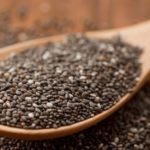Mackerel is a popular choice among housewives as it is versatile and can be prepared in many dishes. However, nowadays, sea fish is often soaked in chemicals, making it challenging to distinguish fresh mackerel from those treated with preservatives. So, how can you select mackerel that is free from chemicals?
To learn more about choosing mackerel and its benefits, read the following article.
1. Nutritional Value and Benefits of Mackerel
Nutritional Value of Mackerel
Mackerel is considered a highly nutritious food for your health. A single mackerel provides approximately 111 kcal to your body. Additionally, mackerel contains various beneficial nutrients that promote health and prevent certain diseases.
The nutritional composition of mackerel includes:
- Proteins
- Fats
- Carbohydrates
- Vitamins (A, B1, B2, PP, and C)
- Minerals (calcium, phosphorus, iron, and potassium)
- Omega-3 fatty acids, DHA
Classification of Mackerel
Scad Mackerel

Scad mackerel is also known as banana mackerel, flower mackerel, or slender mackerel (Layang scad in English).
The body of the scad mackerel is slender and slightly flat. It has a pointed and relatively long snout. The dorsal fin is quite high and long. The back is dark green with black stripes, while the belly is silver-gray.
Scad mackerel is commonly found in the central coastal regions and the Gulf of Tonkin.
Spotted Mackerel

Spotted mackerel is also referred to as round scad (Round scad in English). Its body is flatter than that of the scad mackerel, and its head is rather small, with a pointed mouth and a longer lower jaw.
Spotted mackerel has numerous fins, with the dorsal fin being stiff and pointed. In contrast, the ventral fins are softer and pale yellow.
The back of the spotted mackerel is light green without stripes, unlike the scad mackerel. Its belly is silvery-white, and its body is adorned with shiny yellow scales.
This type of mackerel is mainly found in the provinces of Dong and the Mekong Delta.
Benefits of Mackerel for Health
Assists in Treating High Blood Pressure

Mackerel is rich in potassium, a mineral that helps maintain and stabilize blood pressure and improves cardiovascular health.
Doctors recommend that individuals with high blood pressure include mackerel in their daily diet to help regulate their blood pressure.
Beneficial for Brain Health

Mackerel contains high levels of omega-3 fatty acids and DHA, which help improve brain function and stimulate the development of brain nerves.
According to research conducted by nutrition experts, docosahexaenoic acid in mackerel can prevent memory loss and behavioral disorders in the elderly.
Reduces the Risk of Diabetes

The unsaturated fatty acids in mackerel help effectively control blood sugar levels. Additionally, regular consumption of mackerel can prevent cardiovascular diseases.
Reduces Inflammation and Joint Pain During Pregnancy

Many people wonder if it is safe to eat mackerel during pregnancy, and the answer is YES!
During pregnancy, mackerel can help reduce symptoms of joint pain, such as aching feet, knees, and elbows. It also contains anti-inflammatory properties that can improve swelling, inflammation, and pain in the joints, especially in pregnant women.
2. How to Choose Fresh and Chemical-Free Mackerel
Examine the Gills
The gills are the respiratory organs of fish, so they are the first to be affected if the fish has been exposed to chemicals or toxins.
- Fresh mackerel: Bright pink gills, closely attached, with no strange odor or slime.
- Mackerel treated with chemicals: Dull gills with a dark pink color. If the fish is spoiled, the gills will turn gray. The gills will be loose, and there will be a strange odor and slime.

Examine the Eyes
- Fresh mackerel: Clear and bright eyes with elastic cornea.
- Mackerel treated with chemicals: The eyes will lose their clarity and may even protrude.
- Spoiled mackerel: Sunken eyes with cloudy appearance and wrinkled cornea.

Examine the Scales
- Fresh mackerel: Scales are shiny and firmly attached to the body, with no slime, foul odor, or mucus.
- Spoiled or chemically treated mackerel: Dull and easily detachable scales.

Examine the Body
- Fresh mackerel: When pressed with a finger, the body will show good elasticity without leaving an indentation.
- Mackerel treated with chemicals: In cases of severe poisoning, the head will be large, the body small, and there will be black spots and discoloration. Additionally, black foam and a strange odor will appear during cooking.

Examine the Mouth and Belly
- Fresh mackerel: Mouth is closed tightly, and the anus is pale white and tightly closed against the belly.
- Mackerel treated with chemicals or spoiled: Mouth is slightly open, and teeth may be missing. The belly is swollen, and the anus is dark red and may protrude.

3. Precautions When Eating Mackerel and How to Store It
Precautions When Eating Mackerel
Avoid Eating on an Empty Stomach

If you frequently eat mackerel on an empty stomach, you increase your risk of developing gout. The high levels of purines in mackerel can cause tissue damage, which is a primary cause of gout.
Avoid Overconsumption
Most sea fish contain mercury, and if you consume too much mackerel, this mercury can accumulate in your body. This is especially dangerous for pregnant women, as it can lead to premature birth or miscarriage.
Avoid Eating Raw Mackerel

Many people mistakenly believe that raw mackerel tastes better because the meat remains fresh. However, consuming raw mackerel is extremely harmful and can lead to bacterial infections and intestinal parasites.
How to Store Mackerel
If you don’t have time to prepare mackerel immediately after purchasing it, you can store it in the freezer to keep it fresh and prolong its shelf life. Alternatively, if you don’t have a refrigerator, you can apply diluted vinegar to the fish, then place it in a cool, well-ventilated area.
4. Delicious Dishes Made with Mackerel
Mackerel Braised with Tomatoes

Mackerel braised with tomatoes is rich and savory, with a slight spiciness and sourness. It is best enjoyed hot with white rice and can be accompanied by cà pháo (a type of eggplant) or dưa chuột (cucumber) to reduce the greasiness.
For the full recipe, refer to:
Mackerel Braised with Bamboo Shoots




































